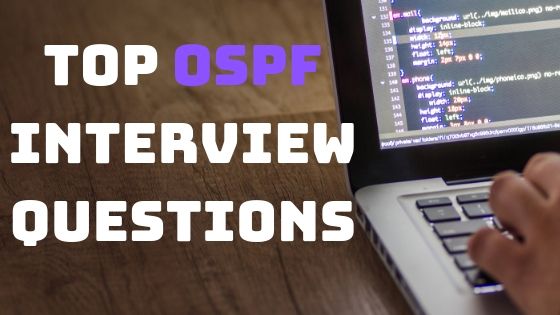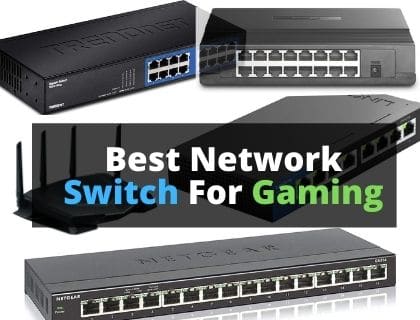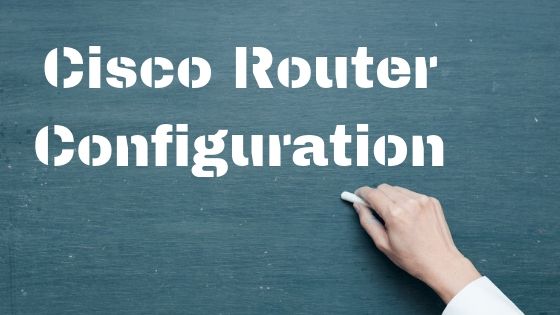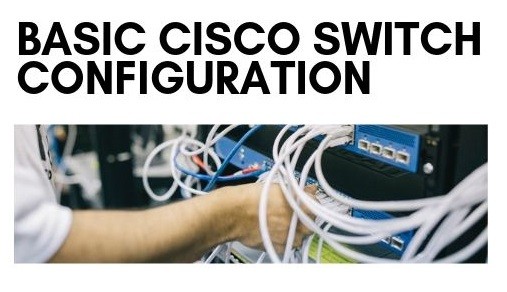
Top OSPF Interview Questions For CCNP CCIE
If you are preparing for job interview related to Networks or Telecom then these Top OSPF Interview Questions For CCNP & CCIE will help you. In this article i have covered all the aspect of OSPF interview questions. These interview questions are useful for entry level job & experience level job. I hope these OSPF interview questions will help you alot in your networking career. It is very important that you must know when and why we use OSPF in your network.
What is OSPF?
OSPF stands for “Open Shortest Path First”. And it is the one of the famous open standard routing protocol. You can run OSPF on Cisco, juniper, Huawei etc, as OSPF is supported by all vendor. OSPF is considered as one of the most efficient routing protocol for larger networks.
Is OSPF link state or Distance Vector protocol?
OSPF is the link state routing protocol. There are main classification of routing protocol in networking work. The link state routing protocol find the best path more efficiently as compare to distance vector routing protocol. Link state routing protocols consider different factors while calculating the best routing path for a network. OSPF default metric is the link bandwidth.
How OSPF finds the best routing path?
Open Shortest Path First OSPF uses the Dijkstra algorithm or SPF to find the shortest path to any network. Router starts sending hellos ocnce the OSPF enable on any router, SPF uses the OSPF Hello packets to find neighbors. Every OSPF enabled router send hello packets to connected neighbors and receives their hello back from router. All OSPF-routers exchange link_states by means of flooding. Every OSPF-router that receives a link state update starts building its link-state-database. And then router propagate that link state updates to other neighbor routers.
DR router is selected which is responsible for generating LSAs for the entire multi-access network.
In how many ways you can enable OSPF on Cisco Router?
You can enable or configure OSPF on Cisco Router by following two ways:
- You can enable OSPF from global configuration mode with following commands
Router#conf t
Router(config)#router ospf 2
Router(config-router)#network 192.168.44.0 0.0.0.255 area 0
2. You can enable OSPF from interface level using following command: Router(config-if)#ip ospf area 0
How many Table are created during the routing process of OSPS?
There are three type of tables in OSPF:
- Neighbor table
- Topology table
- Routing table
Neighbor table In OSPF
In neighbor table you have the list of all directly connected OSPF-routers. Information like IP address, timers, interfaces status, router-ID and DR\BDR are stored in OSPF neighbor table. You can check the neighbor information on a CISCO with following command:
router#show ip ospf 1 neighbor
Topology table
In OSPF topology table you have the complete road map of its entire area. There is a difference between OSPF & EIGRP topology table, that EIGRP only know about it connected neighbor where as OSPF has full road map of entire area.
OSPF Routing table
Routers create the routing tables to forward the IP packet as it has best routes for reaching each networks. you can check the routing table with following command:
Router#show ip route
What is OSPF Cost?
OSPF metric is known as cost. OSPF Cost is the overhead required to send packets across a certain interface. Every interface have different cost base on its bandwidth, if a interface has high bandwidth have lower cost & OSPF consider the best path base on lower cost. T1 has a cost of 65, E1 has 48 and FE/GE/10 GE has a cost of 1.
What is the default administrative distance for OSPF?
OSPF has a default administrative distance of 110.
How OSPF neighbor relationship are build?
OSPF neighbor relationship starts with the hello packets exchange. But before the OSPF starts to form an adjacency, OSPF understand or find the Router ID. The RID is simply the routers name or it is the highest active IP address configured on OSPF interface. When the OSPF enable on any router it starts sending the hello packets to every connected router.
OSPF packets are used for dynamic-discovery of neighbors and also to maintain neighbor relationships. these packets are sent with the multicast address 224.0.0.5 on all interfaces. A hello packets are sent every 10 seconds by default. A hello packet contains the following information:
- Router-ID
- Area ID
- BR / BDR IP Addresses
- Router Priority
- Neighbors
- Hello and dead timers
- Network Mask
- Authentication password
During the OSPF neighbor relationship OSPF goes into following different states:
- Down-state: When router sends a hello packet it is down-state, hello message interval is 10s in broadcast point-to-point network & 30s in non broadcast multi-access.
- Init state: In this state, when a router received a hello packets, it check hello timer, network-ID, area-ID and authentication.
- Two way-State:If already neighbor then update dead timer, if no then add as a new neighbor and move to next step.
- Exstart-State: Master & slave are selected in this . A router with high priority will become Master. Master router sends the information first to slave-router.
- Exchange_State: Routers forward complete link-state database to other interfaces.
- Loading State: In loading state router save the information in memory. Slave send LSR , master reply with LSU ,similarly master request for missing info by LSR and slave rely with LSU. By this process neighbors get synchronize.
- Full-State: At the end neighbors are synchronized & SPF calculate the shortest path.
How many OSPF Network Types?
Following are the network types, which can be operates with OSPF:
- Broadcast network
- Nonbroadcast multiaccess (NBMA)
- Point-to-multi-point
- Point-to-point
What are OSPF LSA and how many type they have?
Link state advertisement are building block of OSPF & it is used the LSA for building the topology table and database.
There are total 11 types of Link state advertisement but first seven are famous types.
- LSA Type-1 known as Router LSA
- Link state advertisement Type-2 known as Network Link state advertisement
- L SA Type-3 ABR summary Route
- LS A Type-4 known as Summary LSA & it is just IP address of ASBR
- LSA Type-5 External LSA
- LS A type-6 (not supported by Cisco)
- LSA type-7
- Link state advertisement type-8
- L-S-A type-9
- L S A type-10
- L.S.A type-11
What is OSPF Virtual Link?
Virtual links are use to connect OSPF area to backbone area, which is not directly connected to area 0. Virtual link comes let say when area-2 is not directly connected to area 0. There is area1 in between area-2 and area-0. If a area is not direclty connected to area 0 then communication is not possible between area-0 and area-2. To make communication between these areas you need to create virtual-links.
What is backbone area in OSPF?
IN OSPF area 0 is known as backbone area, which is core of the network. All the other OSPF areas are connected to area 0 or backbone area. All routing information are distributed through the area 0. If you have single area OSPF in your network you can use any area, there is no requirement to have area 0. But in case of the multiple areas you must need to configure the area 0 for the operation of SPF algorithm. You can also configure OSPF with multi area for this you can visit here.
What is DR/BRR in OSPF?
In Ethernet environment when multiple OSPF-routers are connected with each other. A Designated Router (DR) & a Backup-Designated-Router (BDR) are elected. DR make to avoid the broadcast in network & reduce network traffic as only they maintain the complete ospf database & then send updates to the other routers on the shared network segment.
What is the OSPF area?
In OSPF you can segment your network in group, and these segments and group are known as OSPF area.
What is stub area in OSPF?
OSPF stub area filtered the different LSA information in order to keep the ABR (Area border router)’s routing database simple. Area border router block the LSA type-5 to flood in stub area & replace this with LSA-3. In stub area no ASBRs allowed and Area 0 cannot be declared as stub area. In OSPF stub area you have external routes but you can use default routes to forwarding these packets.
Name the different types of OSPF area?
Some of area type type which are support by the OSPF as following
- Backbone Area
- OSPF-Stub area
- O SPF Totally stubby Area
- OSPF Not So stubby area
What is not so stuby area in OSPF?
In case of Not so stubby areas area border router will block the spreading of LSA type-5’s & create a new LSA type known as LSA type 7 to allow external-routes to be introduced by OSPF routers. For example, a router at the edge of an not so stubby area could have an external-route that it pushes back as a LSA type-7. Remaining OSPF routers in same area will see this external route flooded. The area border router will convert the type-7 in to type-5 to be spreading it to the rest of network.
What is OSPF RID Router-id and how is it elected?
In OSPF process, every router is assigned with router ID. You can elect or set the router ID in OSPF with following ways:
- You can set the router ID with Manual configuration using command router-id
- If you will not the it with command then highest IP address of loopback interface will be your router ID.
- If no loop back address configured then highest IP address is yout RID.
Thank you for visiting here, share your questions that you face regarding the OSPF in your OSPF interview Questions.
Related: Top BGP Interview Questions










